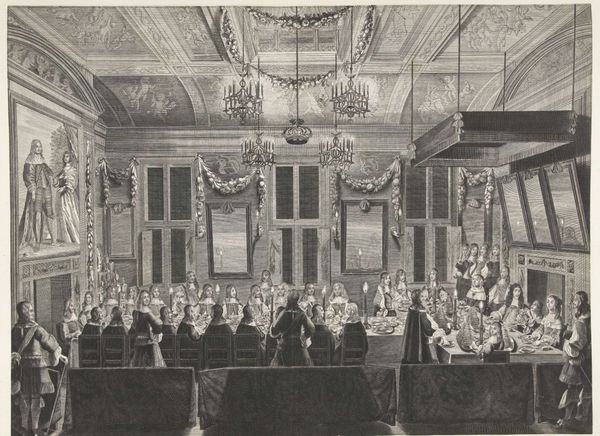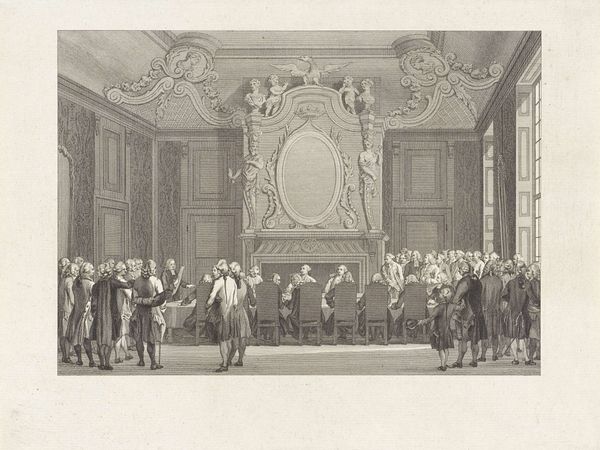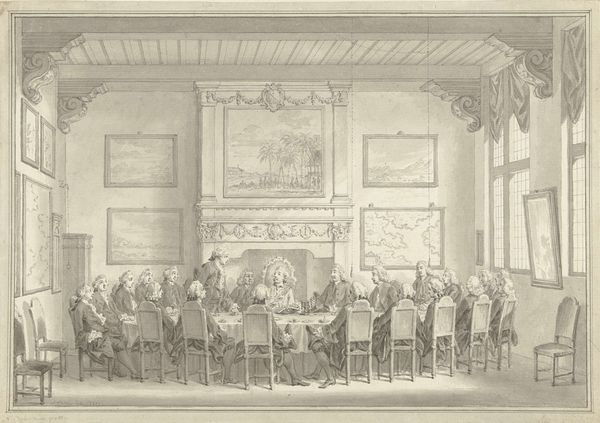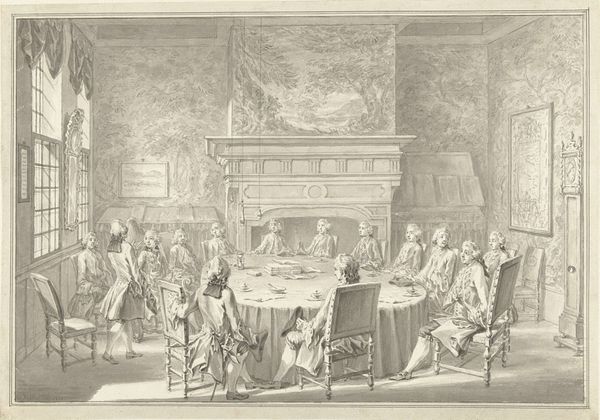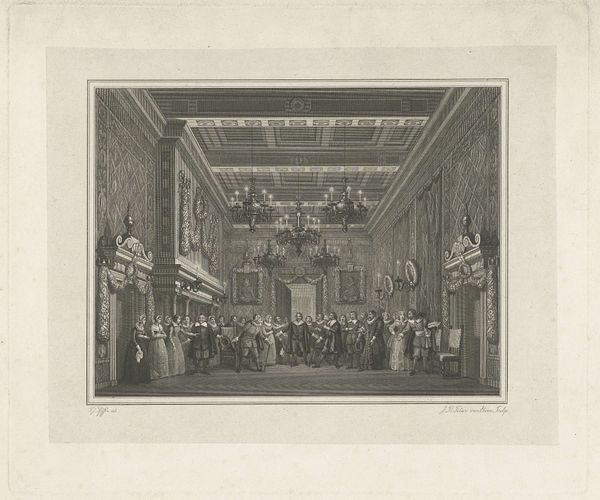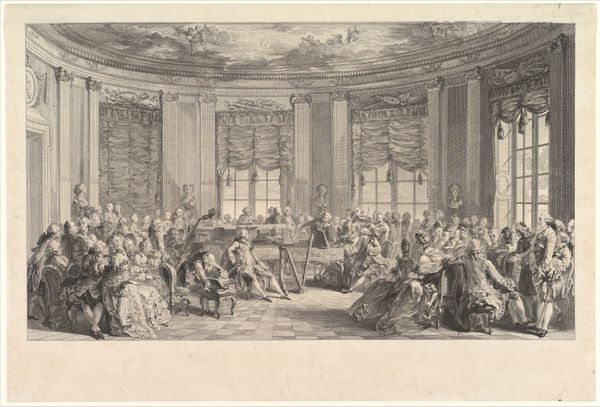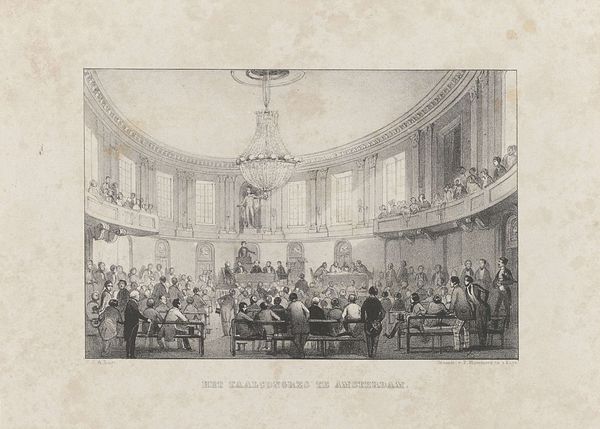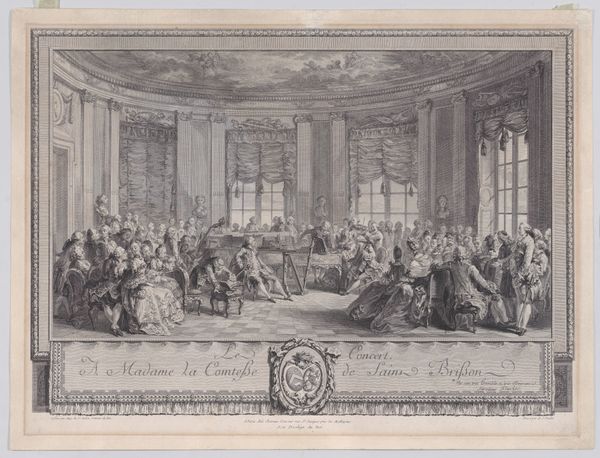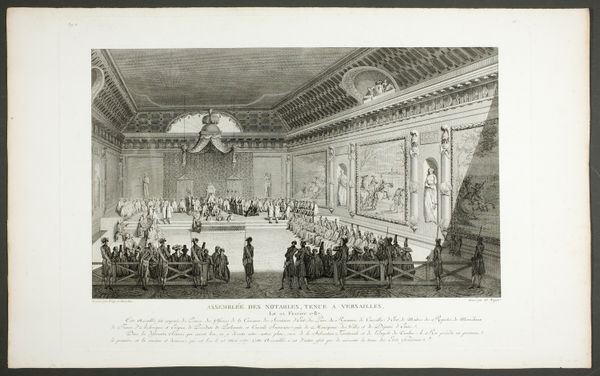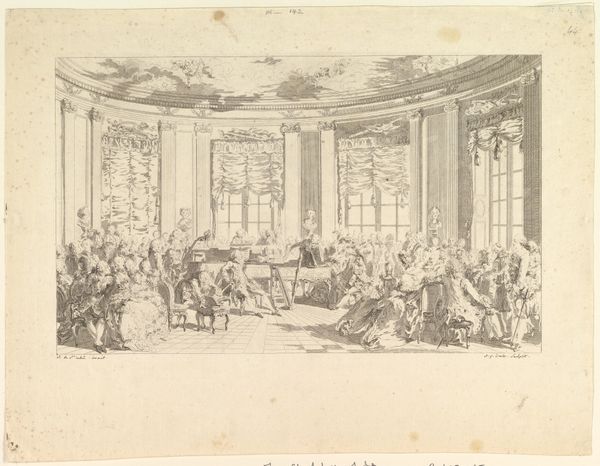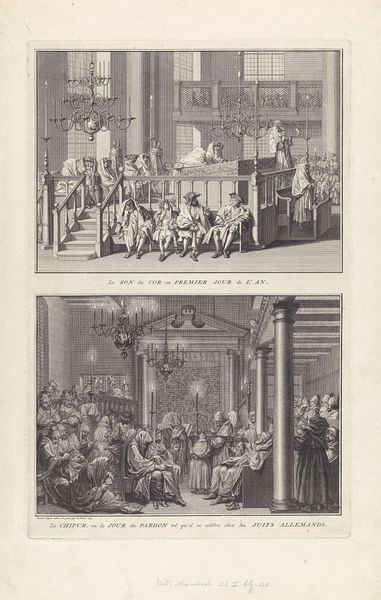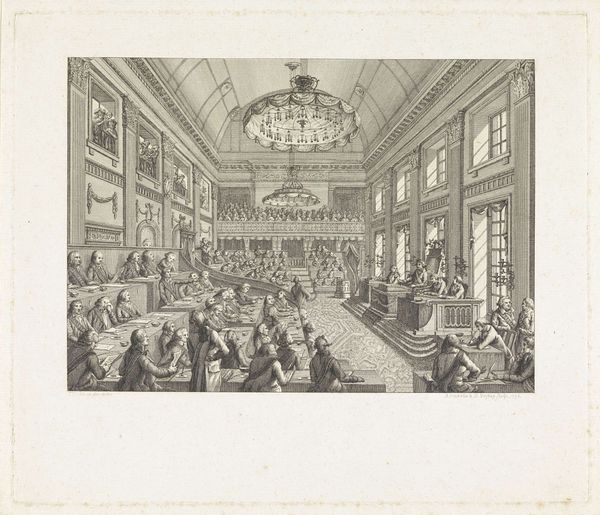
Assemblée des Notables, Versailles, 1787 1787
0:00
0:00
drawing, print, etching
#
portrait
#
drawing
#
neoclacissism
# print
#
etching
#
france
#
history-painting
Dimensions: 11 1/8 x 15 15/16 in. (28.2 x 40.5 cm)
Copyright: Public Domain
Editor: This etching by Jean Michel Moreau the Younger, titled "Assemblée des Notables, Versailles, 1787," offers a glimpse into a pivotal moment in French history. What strikes me is the sheer formality and rigid structure of the scene. What do you see in this piece, especially considering the looming revolution? Curator: Beyond the formal representation, I see a carefully constructed stage for a drama already in motion. Note how the artist renders the individuals almost as types, not specific portraits. This isn't just about capturing likeness; it's about conveying a power structure and, perhaps more subtly, its inherent fragility. Look at the architectural details, the overwhelming grandeur intended to impress—a kind of visual propaganda. Yet, doesn't that very excess speak to a system under immense strain? Editor: Absolutely, there's a palpable tension. The architectural symbolism is fascinating. Is it projecting strength or masking vulnerability? Curator: I'd argue both. The symbols of power – the ornate ceiling, the royal dais – aim to project unshakable authority, echoing centuries of tradition. But think about why this assembly was even called. They were desperately trying to solve a financial crisis. The symbolism almost feels like a desperate attempt to reassert control in the face of imminent collapse, like an overcompensation. And consider how print functions – to spread the image. Who would have had access to it? What message did Moreau wish to communicate? Editor: So the image itself, reproduced and disseminated, becomes part of the unfolding narrative? That’s powerful. I initially saw a static depiction of a historical event, but now it feels more like a commentary on the eve of revolution. Curator: Precisely. Images are never neutral. They participate in the construction of memory, shaping how we understand the past, and, consequently, the present. This piece embodies that tension beautifully. Editor: I never thought about it in that light, but now I can better appreciate this artwork. Curator: Understanding visual symbolism adds new perspective.
Comments
No comments
Be the first to comment and join the conversation on the ultimate creative platform.
